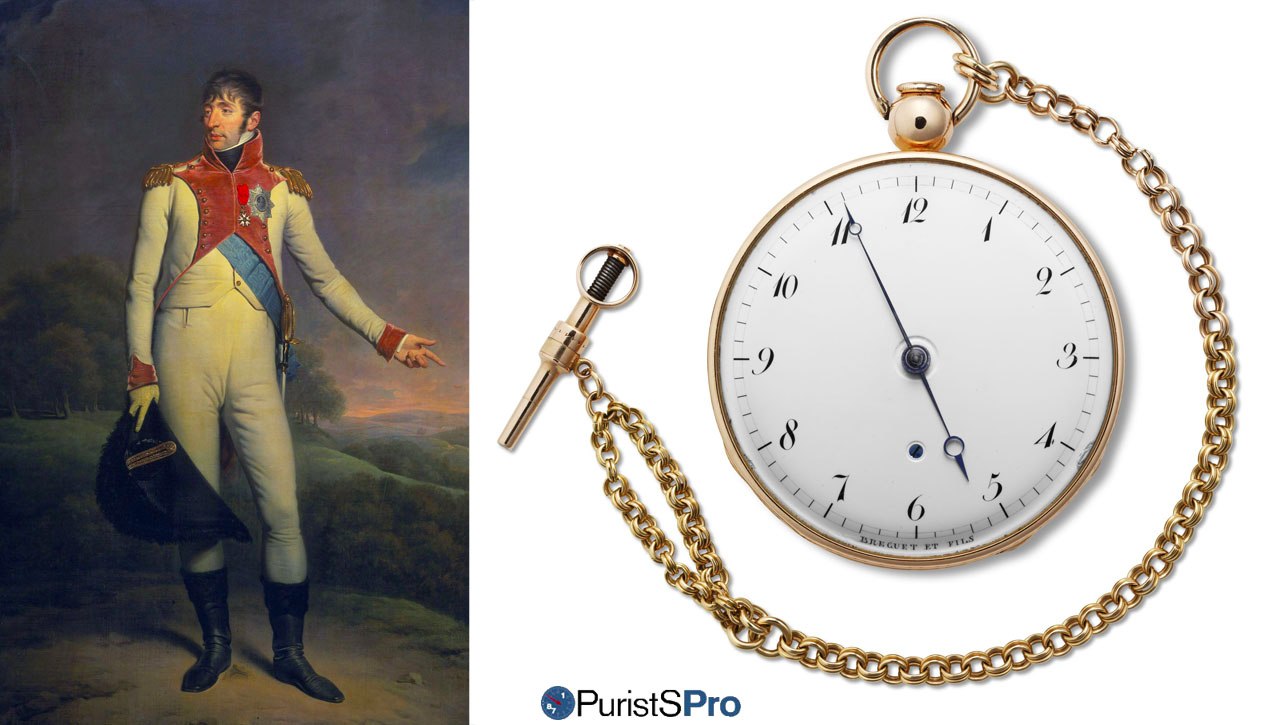
Breguet and the 200th Anniversaries of the Congress of Vienna and the Battle of Waterloo

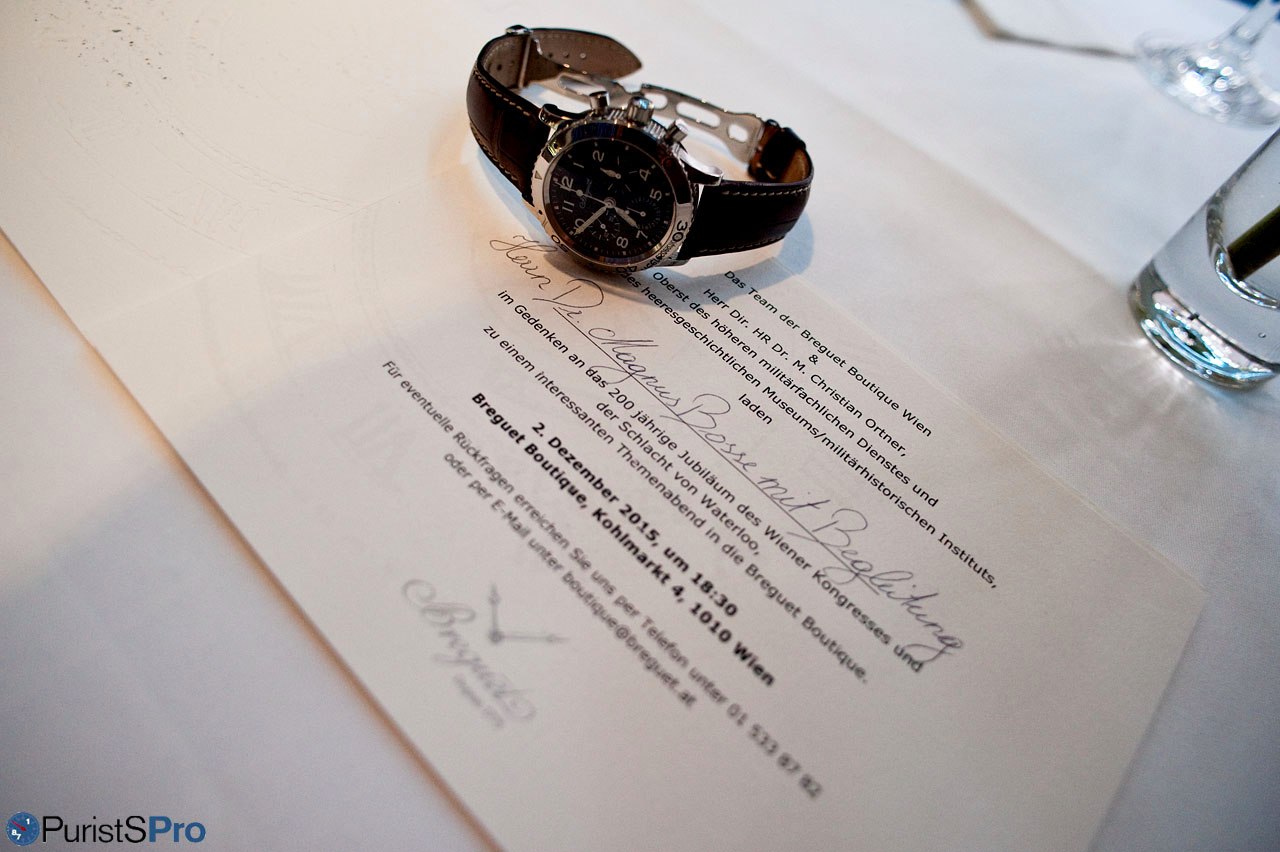
One of them, Breguet N° 1693, owned by Polish politician Count Stanislas Potocki, is of particular importance as it can be seen as ancestor to the contemporary ‘Tradition’ collection.
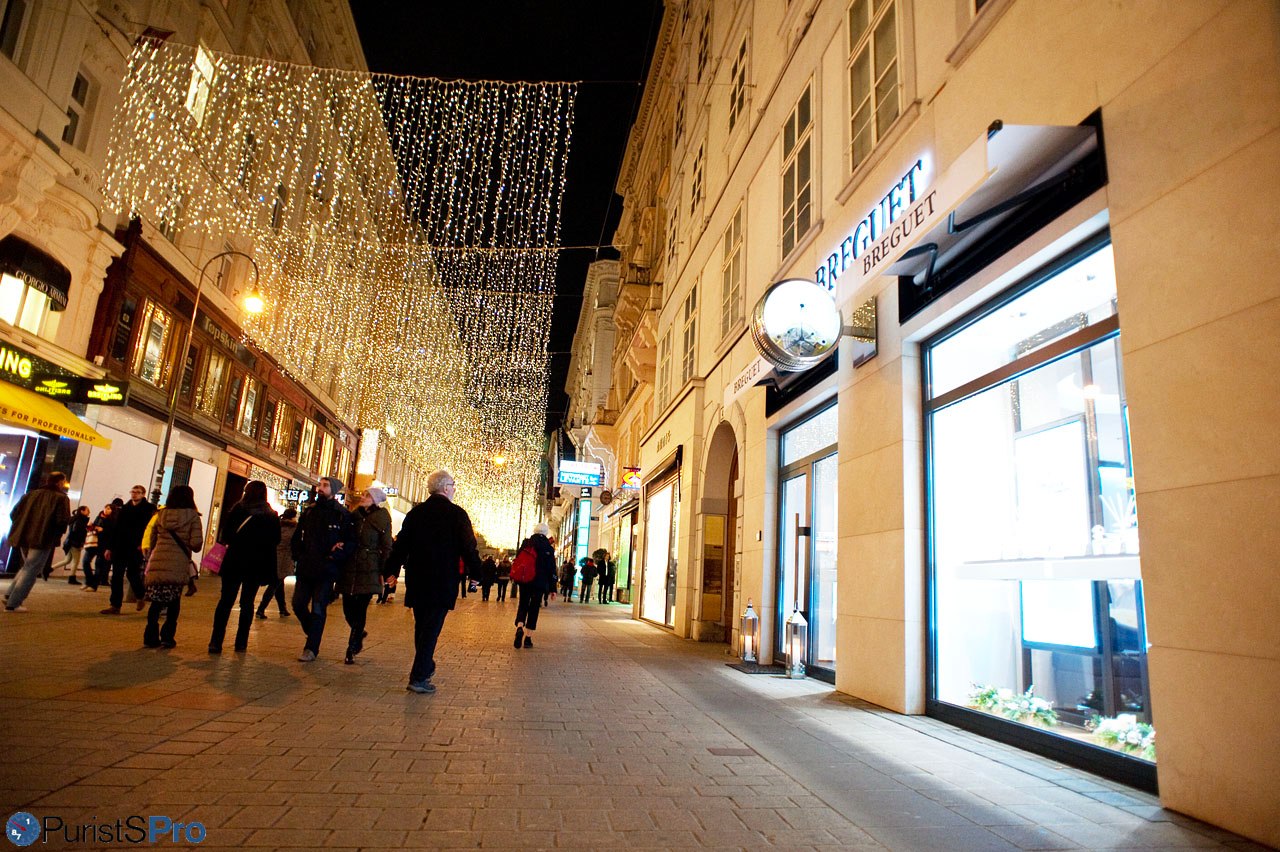
So, one cold evening in early December a select group of Breguet enthusiasts assembled at Vienna's Breguet Boutique for an evening which was set to honour both the importance this city played in a milestone event that should shape the political landscape of Eurpoe for more than one century, namely the Congress of Vienna (1814/1815), and on the other hand an ingenius watchmaker and diplomat (or shall we say: gifted opportunist?), Abraham Louis Breguet, who managed to count among his clients the fiercest adversaries of their time - simultaneously!
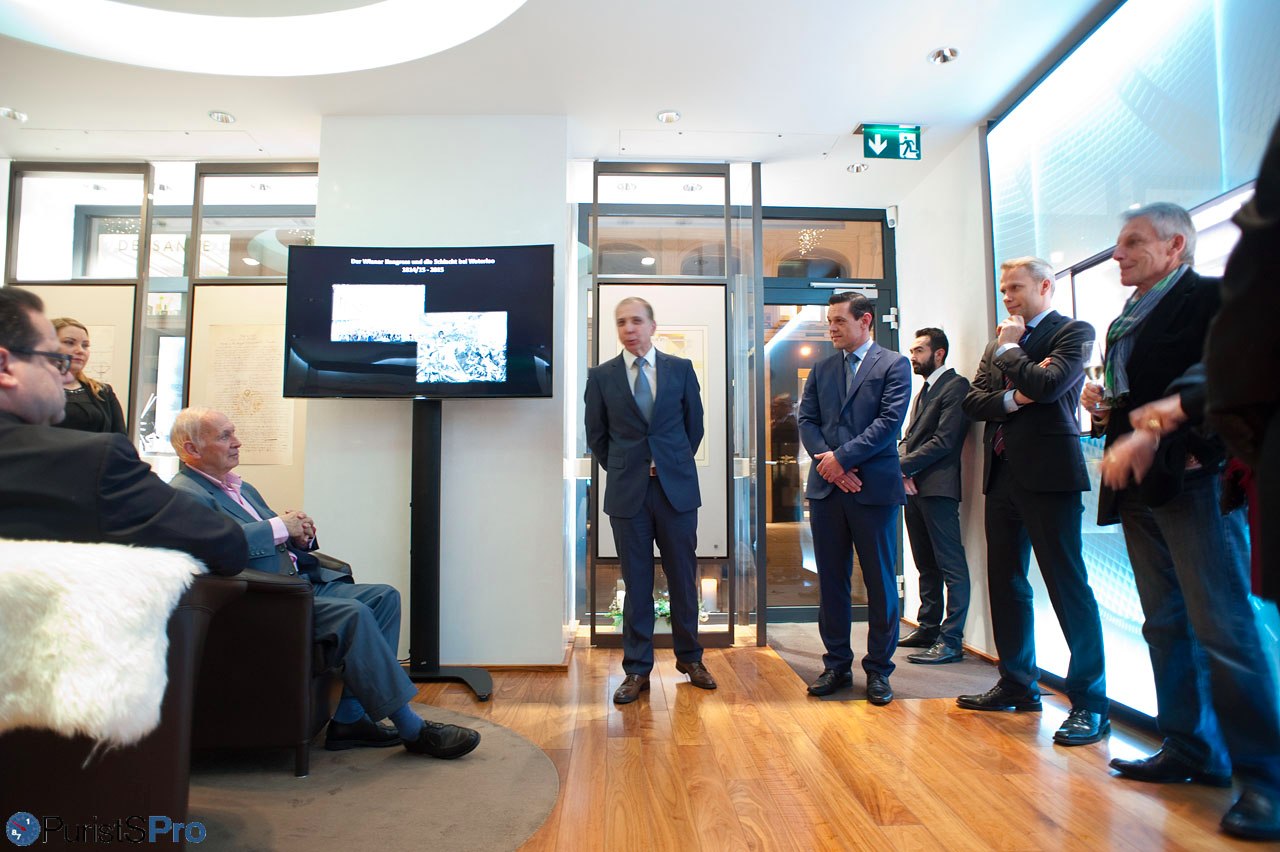
Guest of Honour this evening was Colonel Dr. M. Christian Ortner, Director of the Museum of Military History/Historical Institute of the Military, (HGM/MHI), in Vienna, who gave a vivid talk on the background, aims and personalities of the negotiating parties to the Congress as well as the warcraft tactics which ultimately led to Napoleon’s defeat in the Battle of Waterloo.
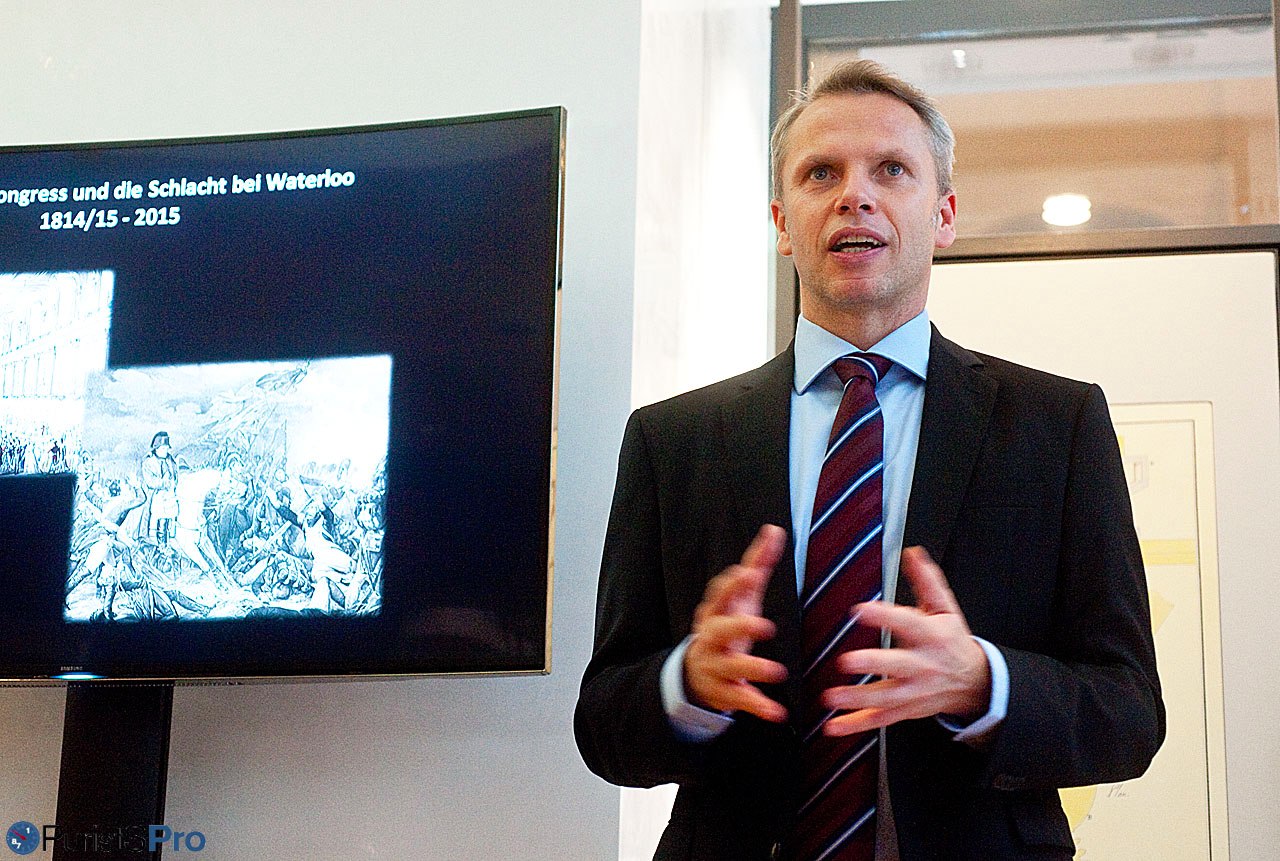
From Wikipedia:
“The Congress of Vienna was a conference of ambassadors of European states chaired by Austrian statesman Klemens Wenzel von Metternich, and held in Vienna from September 1814 to June 1815. The objective of the Congress was to provide a long-term peace plan for Europe by settling critical issues arising from the French Revolutionary Wars and the Napoleonic Wars. The goal was not simply to restore old boundaries but to resize the main powers so they could balance each other off and remain at peace. The leaders were conservatives with little use for republicanism or revolution. France lost all its recent conquests, while Prussia, Austria and Russia made major territorial gains. Prussia added smaller German states in the west and 40% of the Kingdom of Saxony; Austria gained Venice and much of northern Italy. Russia gained parts of Poland. The new Kingdom of the Netherlands had been created just months before, and included formerly Austrian territory that in 1830 became Belgium.
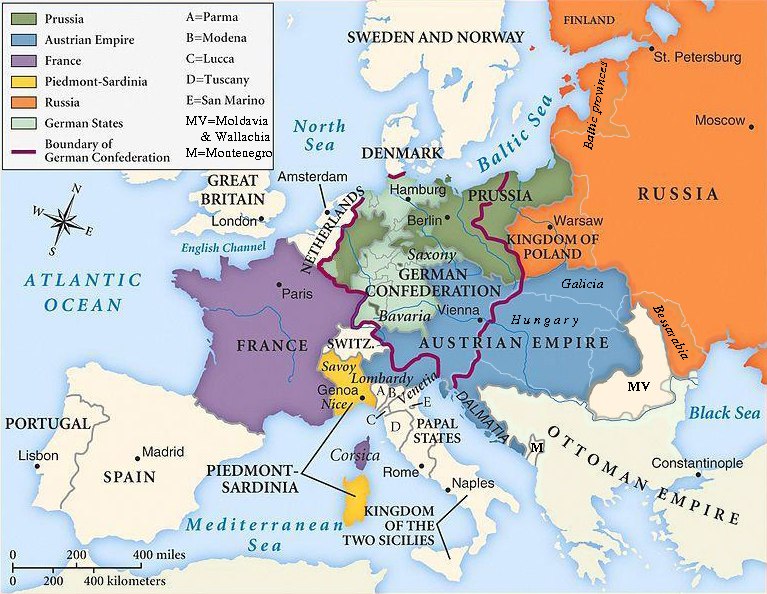
The Congress of Vienna was the first of a series of international meetings that came to be known as the Concert of Europe, which was an attempt to forge a peaceful balance of power in Europe. It served as a model for later organizations such as the League of Nations in 1919 and the United Nations in 1945.
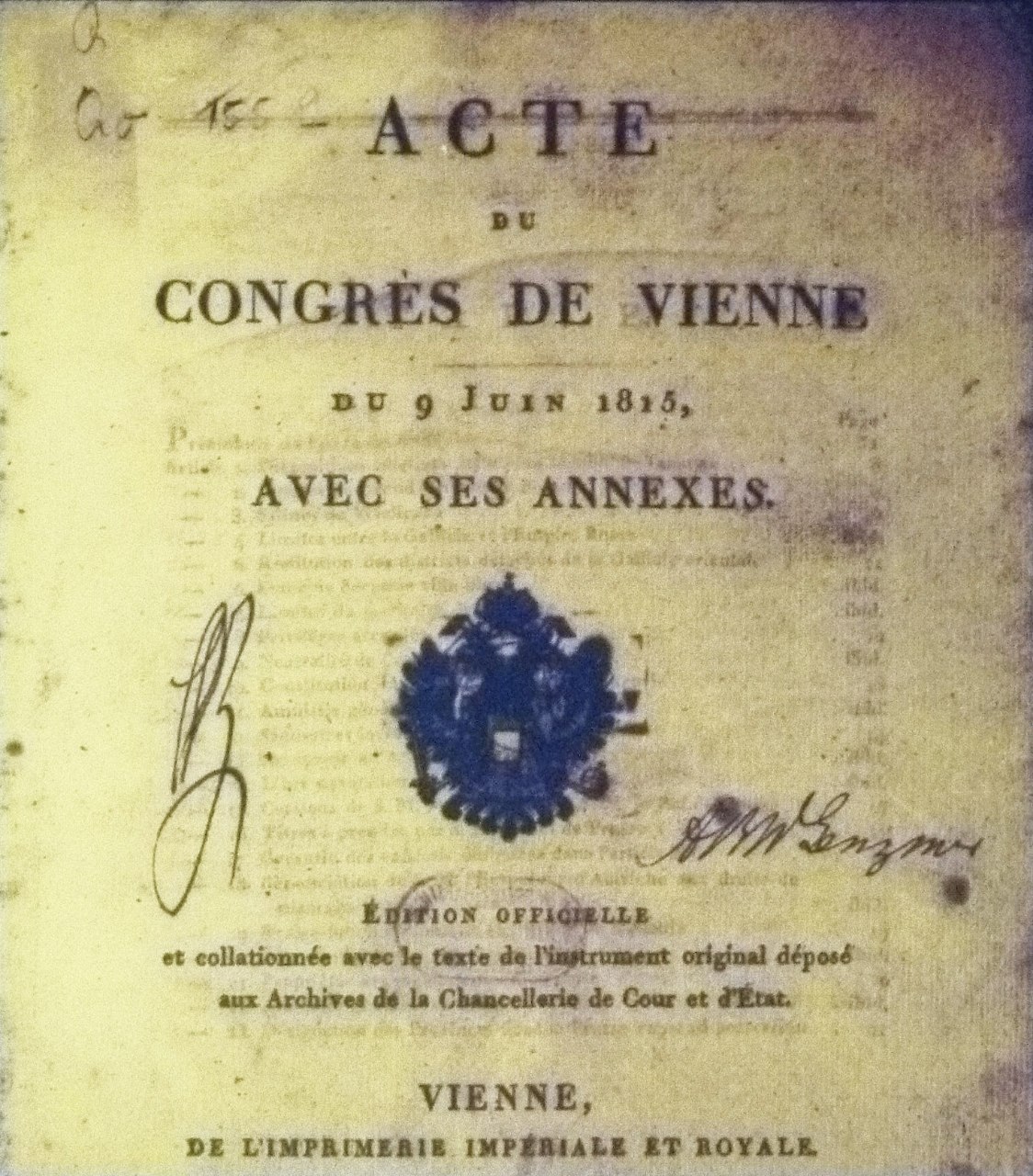
The immediate background was Napoleonic France's defeat and surrender in May 1814, which brought an end to twenty-five years of nearly continuous war. Negotiations continued despite the outbreak of fighting triggered by Napoleon's dramatic return from exile and resumption of power in France during the Hundred Days of March–July 1815. The Congress's "Final Act" was signed nine days before his final defeat at Waterloo on 18 June 1815.
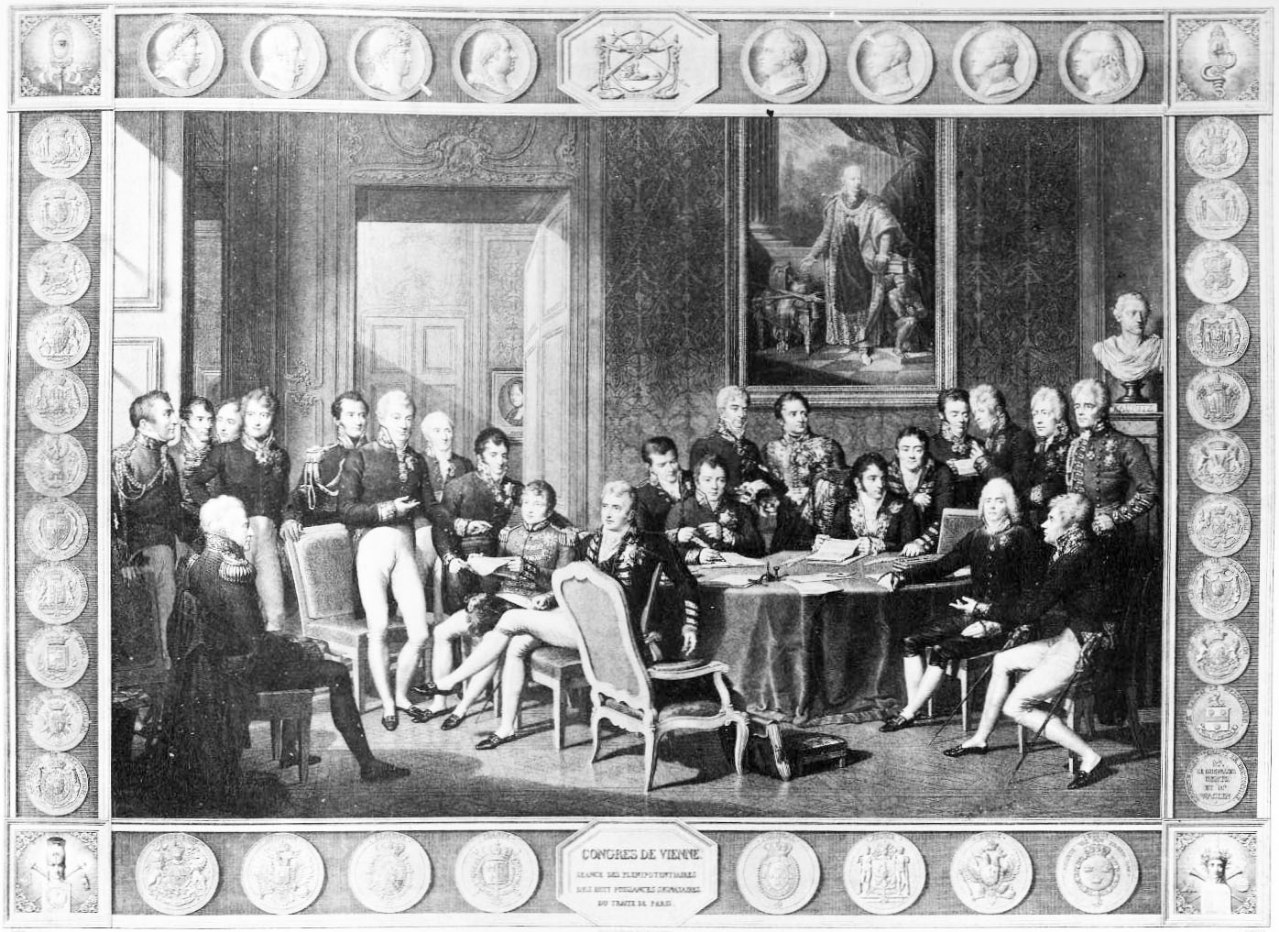
In a technical sense, the "Congress of Vienna" was not properly a Congress: it never met in plenary session, and most of the discussions occurred in informal, face-to-face, sessions among the Great Powers of Austria, Britain, France, Russia, and sometimes Prussia, with limited or no participation by other delegates. On the other hand, the Congress was the first occasion in history where, on a continental scale, national representatives came together to formulate treaties, instead of relying mostly on messages between the several capitals. The Congress of Vienna settlement, despite later changes, formed the framework for European international politics until the outbreak of the First World War in 1914.”
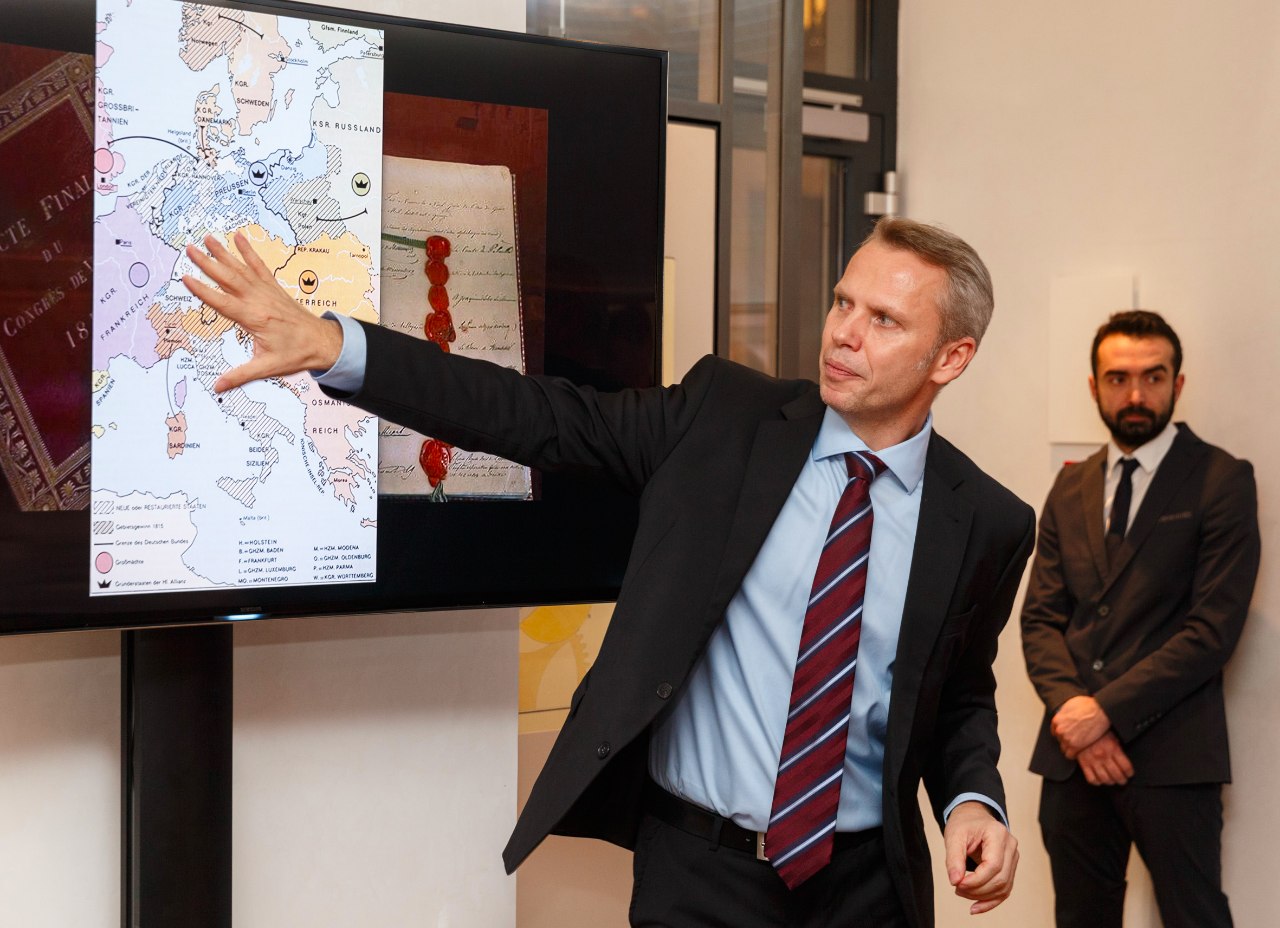
Josef Pamperl, managing director of the Breguet Boutique Vienna, introduced us to the Breguets owned by the key players amongst the Congress participants.

Breguet N° 1693, owned by Polish politician Count Stanislas Potocki, with case number 2815. It is a ‘montre à tact`with an additional eccentric display on an open-worked dial, thus it can can be seen as ancestor to the contemporary ‘Tradition’ collection. It also has the famous „Pare-Chute“ shock resistance mechanism.
The watch was sold on 12 February 1809 to Count Potocki fro a price of 1450 Francs. Today it is an exhibit at the Watch & Clock Museum in Vienna with extraordinary historical importance.
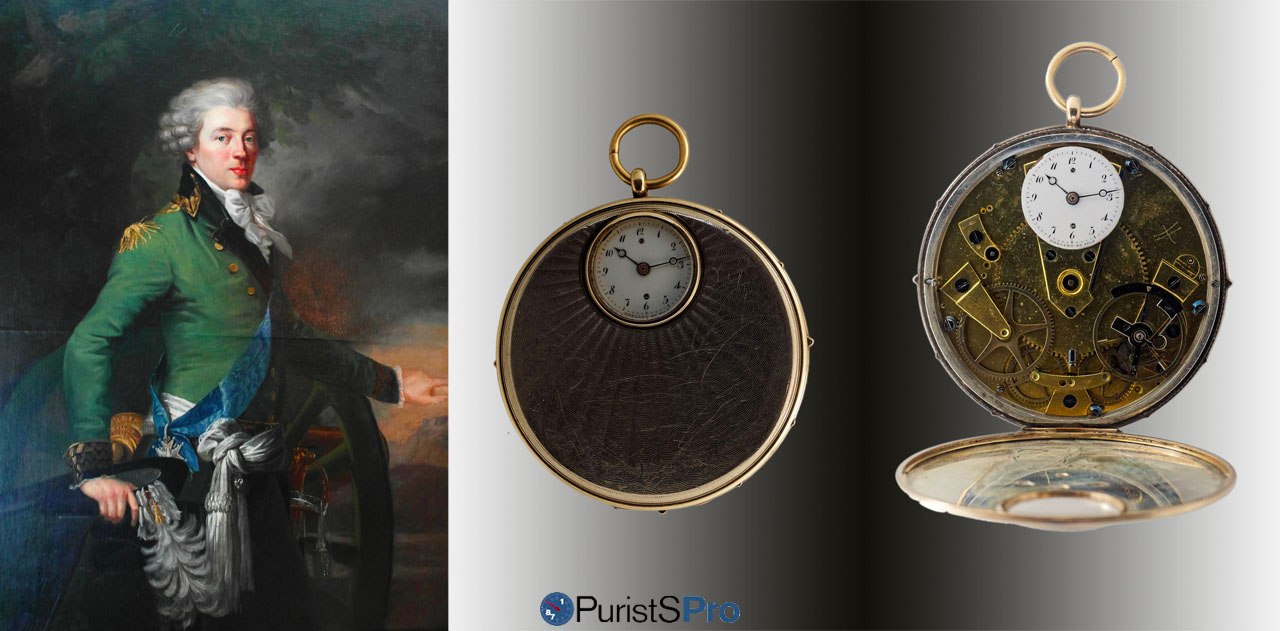
The Breguet N° 423-5 was sold as well in the year 1809 to the Russian Tsar Alexander I. in St. Petersburg at the inprecented high price of 14.000 Gold Francs. Originally it featured a „Sympathie“-mechanism which has later been removed, also its partnering clock is missing. As technical delicacy the watch is driven by a constant force mechanism.
Nicolas G. Hayek, back then President of Breguet, acquired this remarkable piece on 20 October 2002 at an auction organised by Antiquorum, at a price of CHF 700.000.
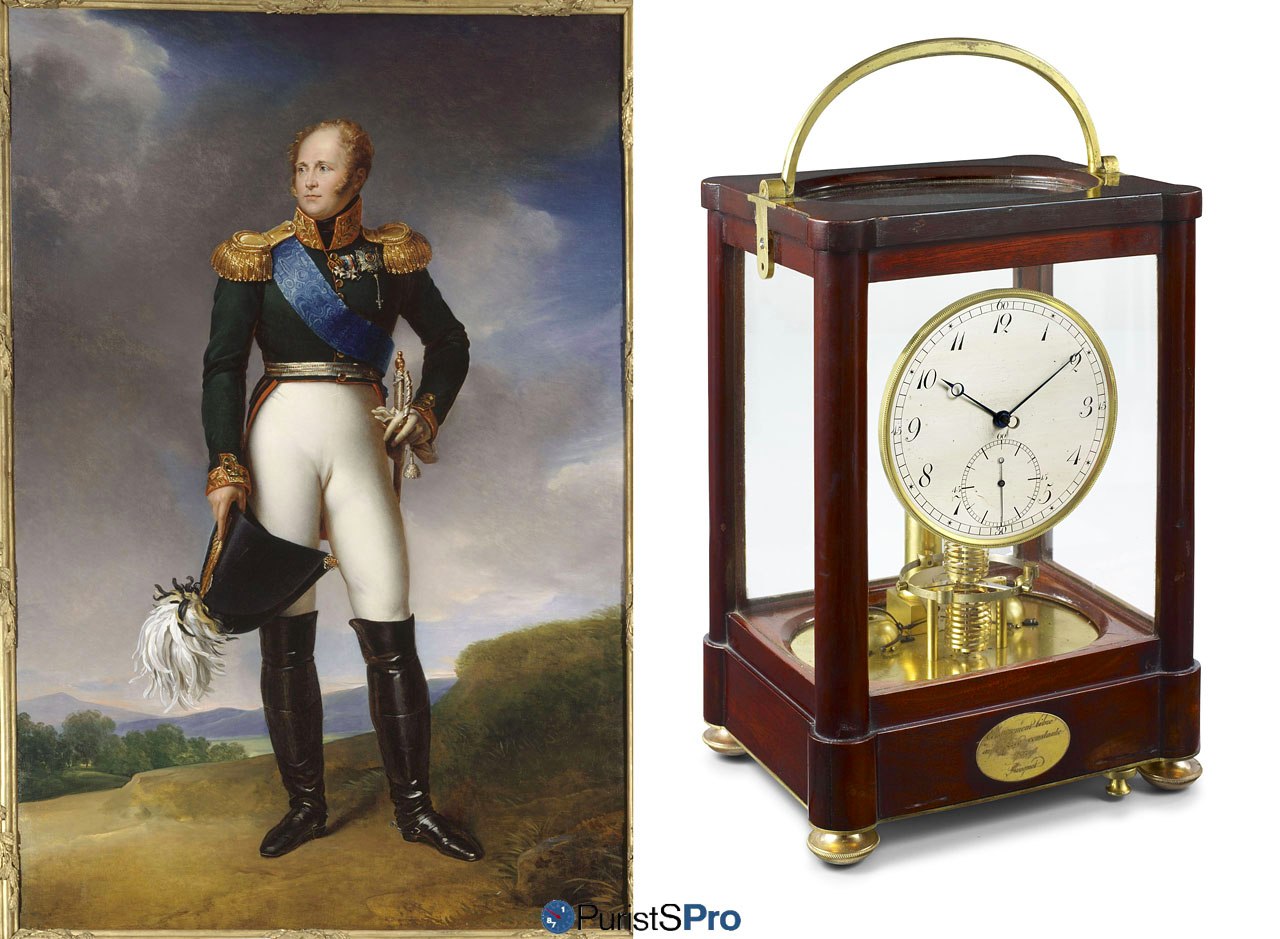
Breguet N° 178, a travel carriage clock sold to Napoleon
Bonaparte on 24 April 1798, features a quarter-repeater. The ornament case is made of gilded bronze with a silver dial displaying moonphase, weekday, date and month (in separate windows). It currently belongs ot he permanent collection of the Swiss National Museum in Zurich.
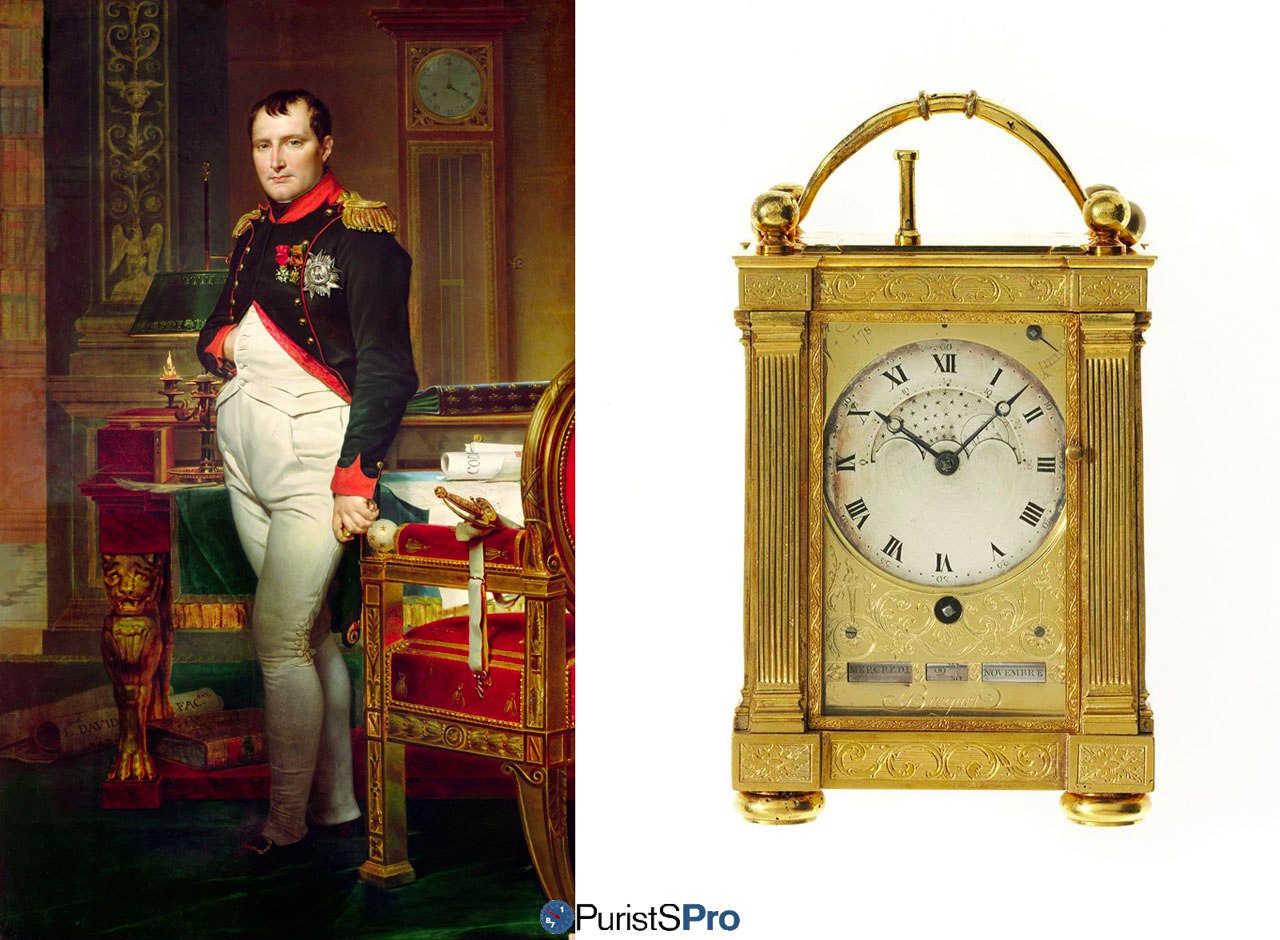
Field Marshal Arthur Wellesley, 1st Duke of Wellington, owned, amongst other pieces, a Breguet ‘montre à tact` depicted below. He was known to be quite fond of the feature which allows to gauge the time withoiut others able to note this. The watch shows his famialy crest, a map of France as well as the portrait of an unknown lady...

Louis Bonaparte, King of
Holland and brother of the French Emperor, wore this Breguet N° 1717, a simple pocket watch.

Marie Louise, Duchess of Parma, daughter of Austrian Emperor Franz II. and second wife of Napoleon I., acquired her pocket watch, the Breguet N° 2727, on 27 September 1813. She was known to hate her husband and mocking him, through what would today be called a voodoo-doll, as 'antichrist'. At the Congress Marie Louise was adjudged the Duchies of Parma, Piacenca and Guastalla.
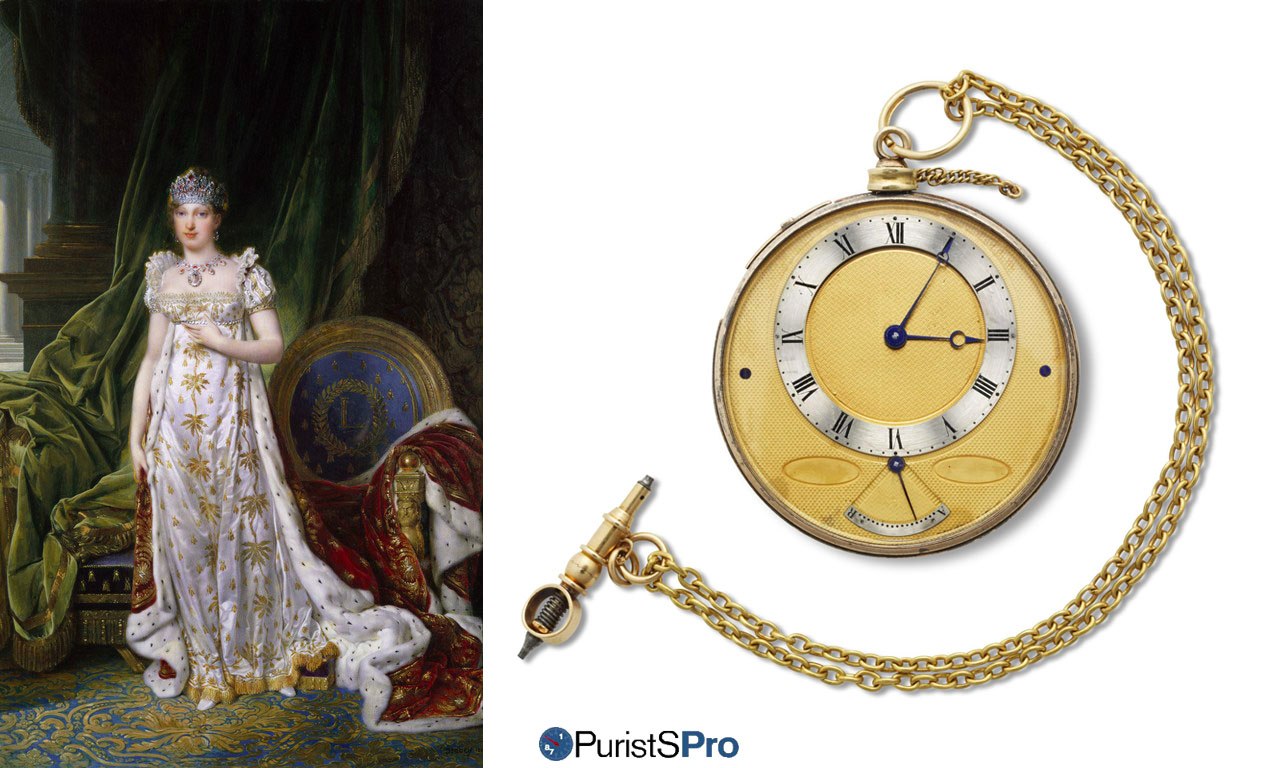
Below, I would like to simply add images I took of the original Breguet Tradition - a piece so typical for the brand that this is the only one needed to explain it all. It also appears to be modelled after the Breguet N° 1693, owned by Polish politician Count Stanislas Potocki. Enjoy!
Best,
Magnus
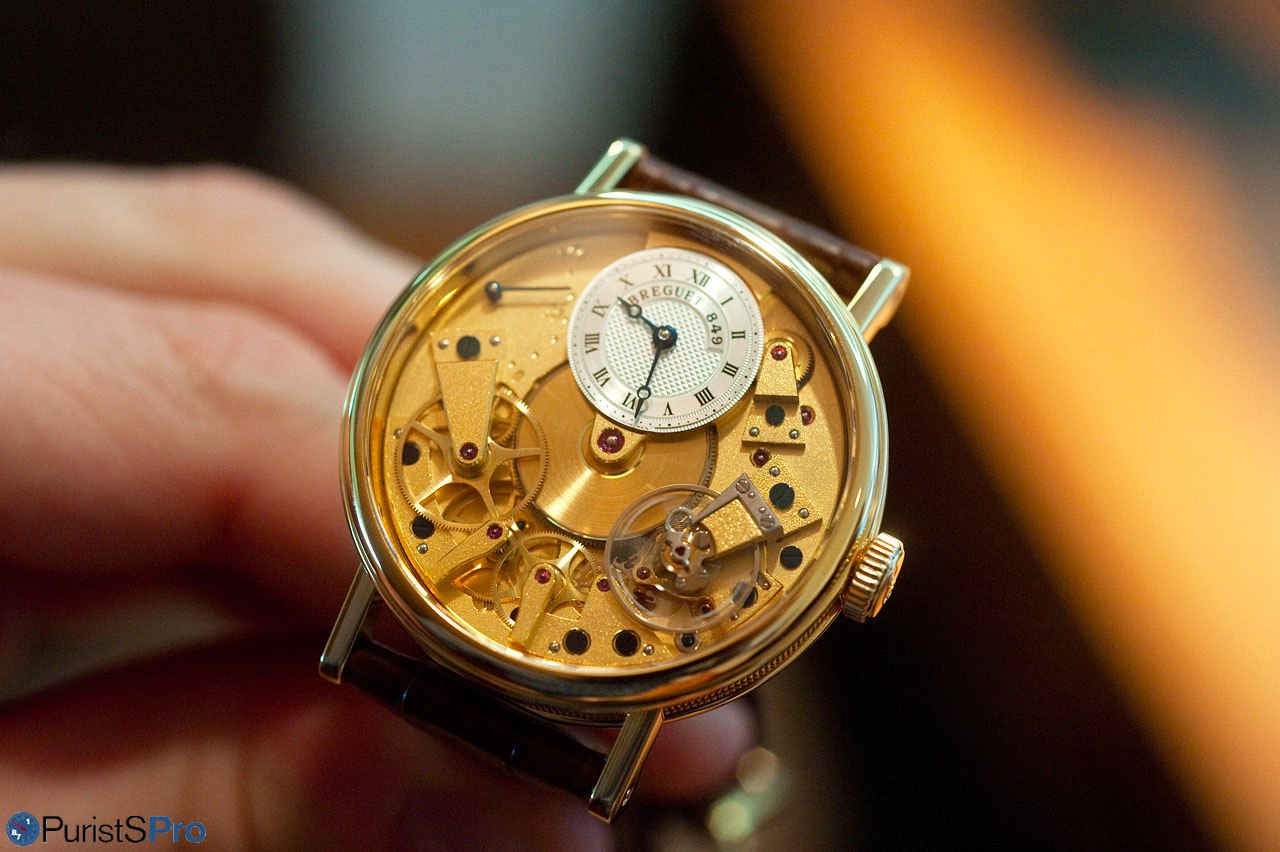
Hand-guilloched dial, sharply and beautifully executed:
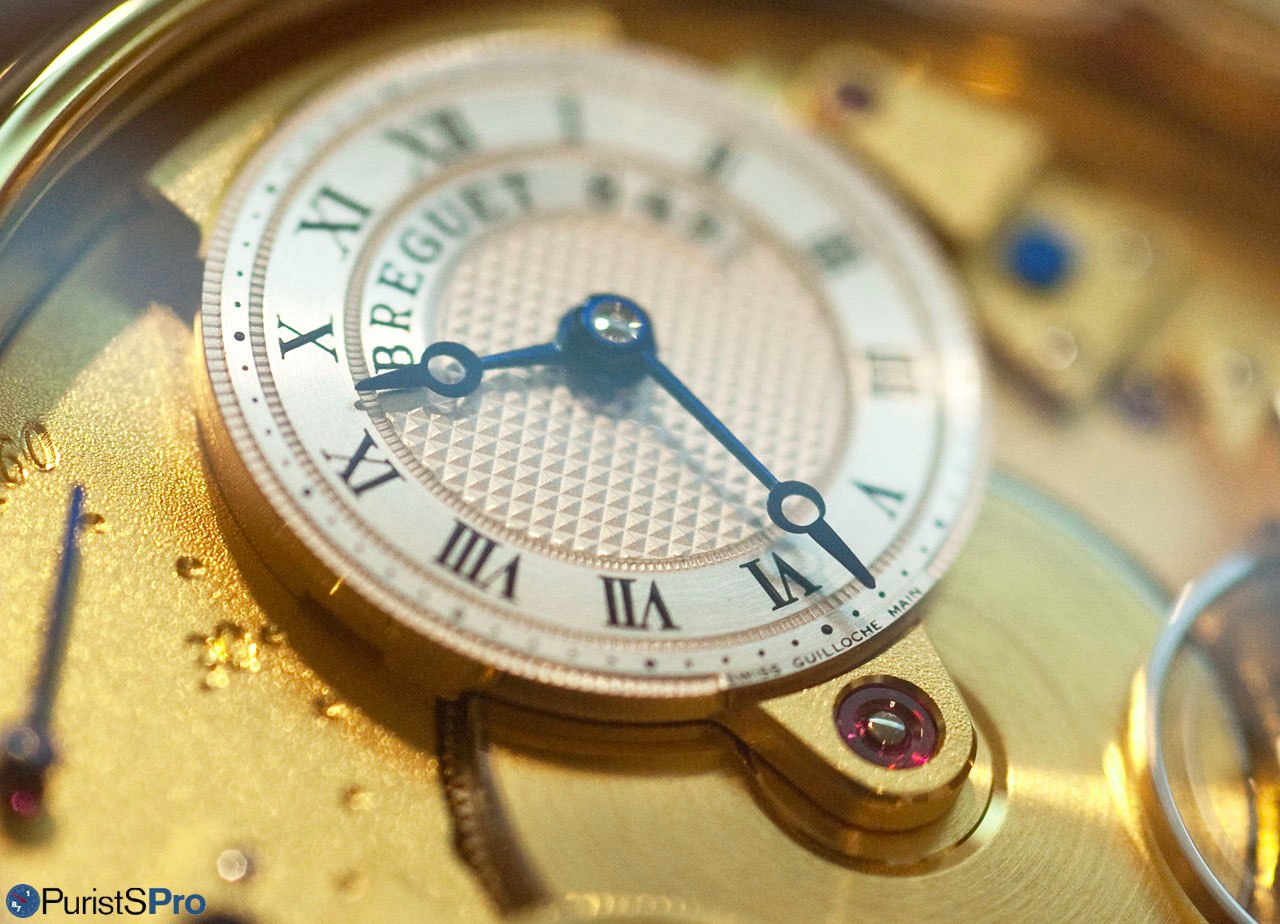 Hand-blued gorgeousness:
Hand-blued gorgeousness: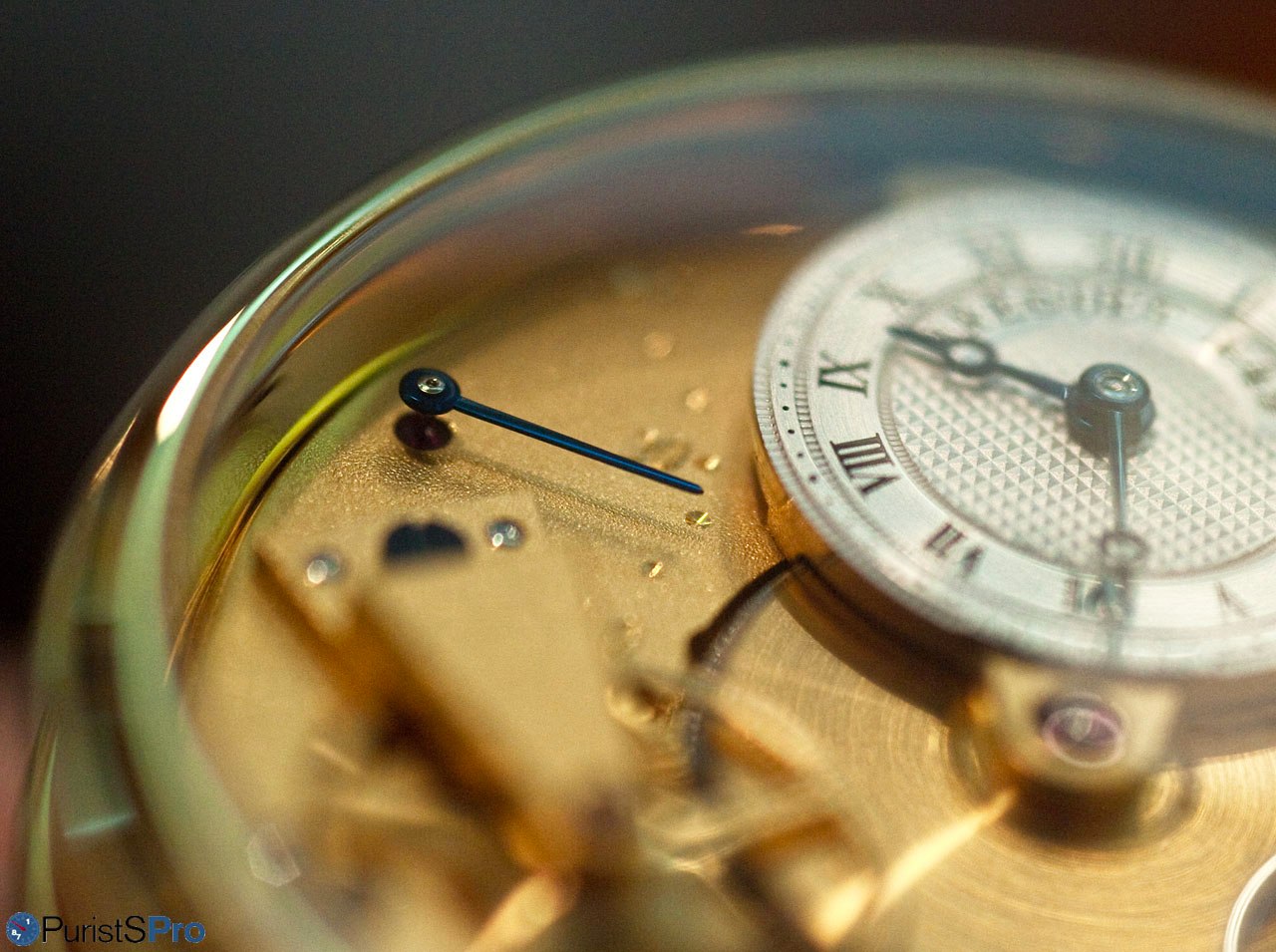
Escapement section:
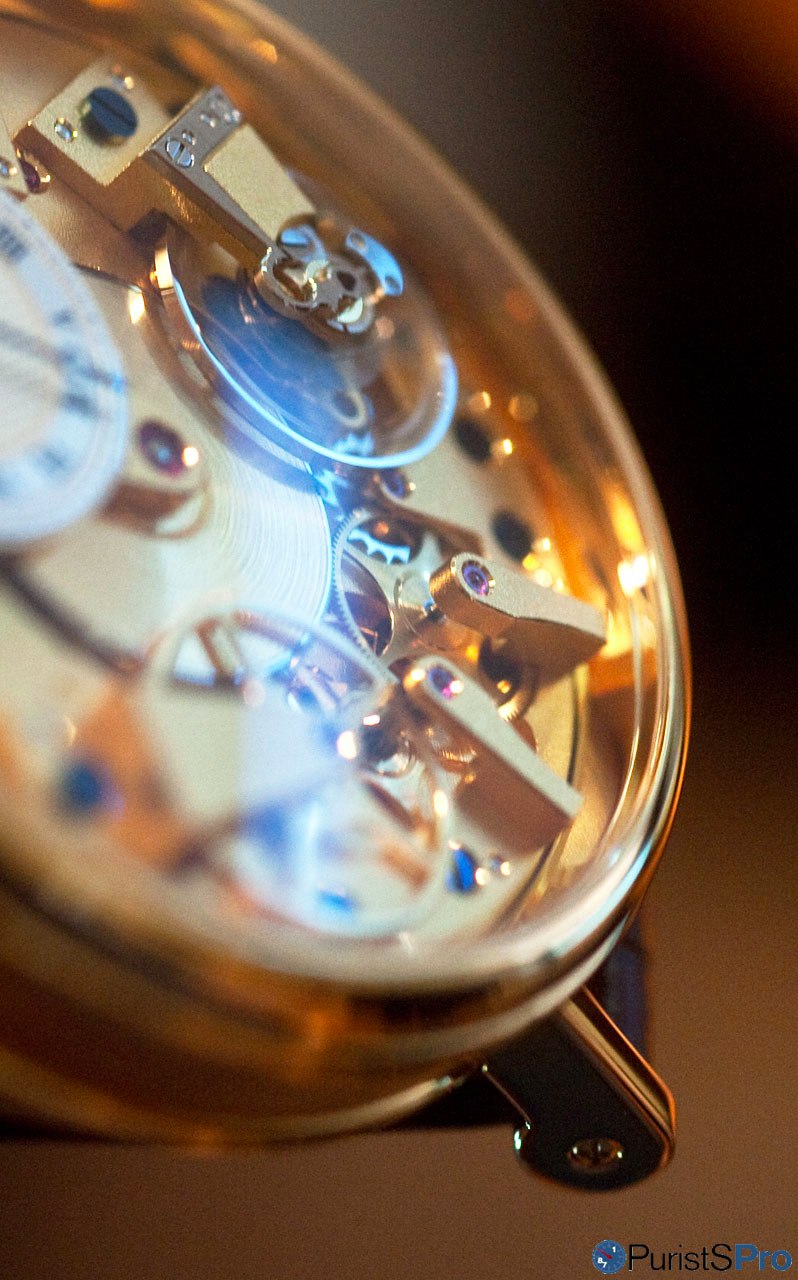
„Pare-Chute“ shock resistance mechanism, modern implementation:
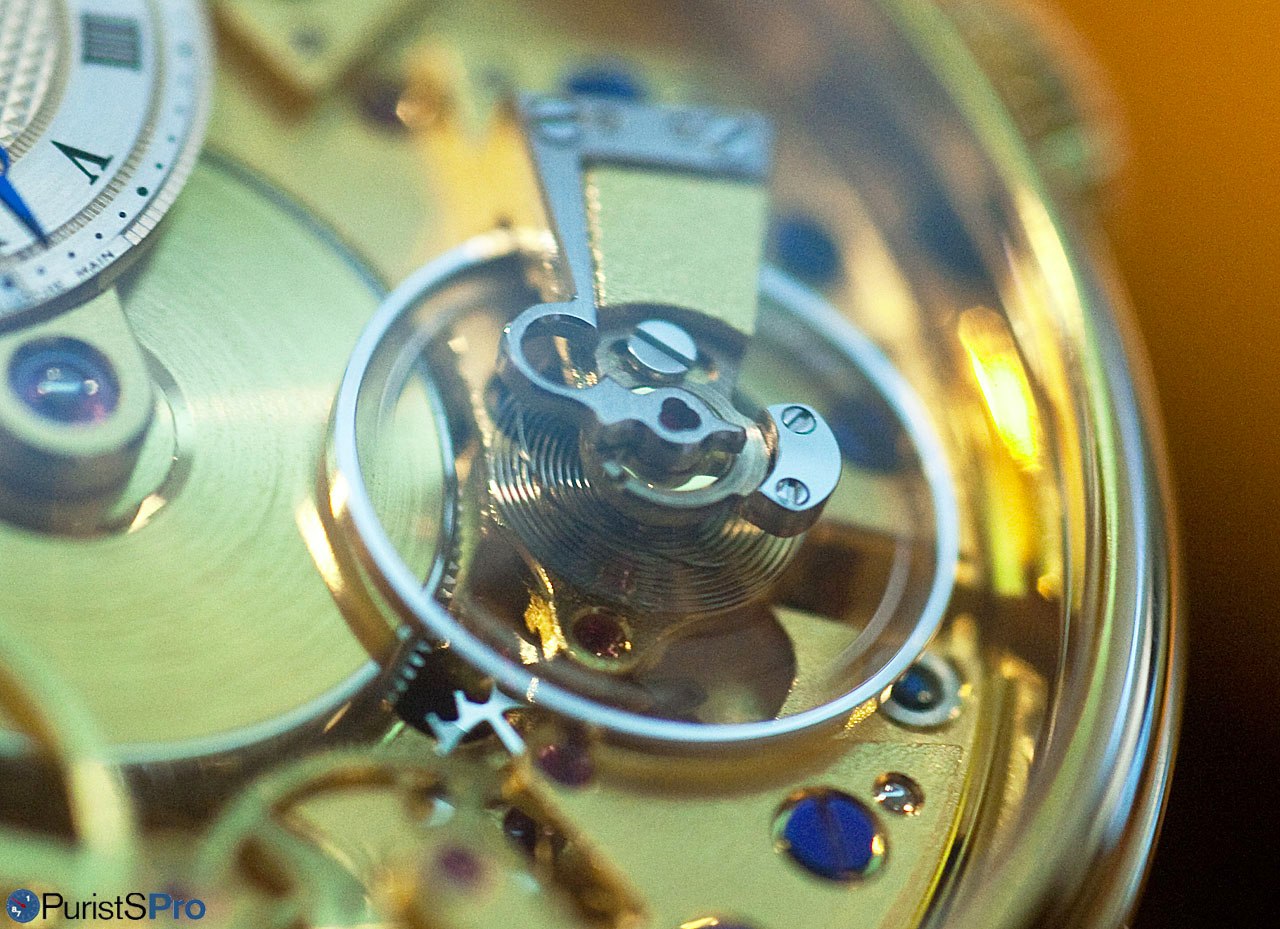
Details of the escapement wheel bridge:
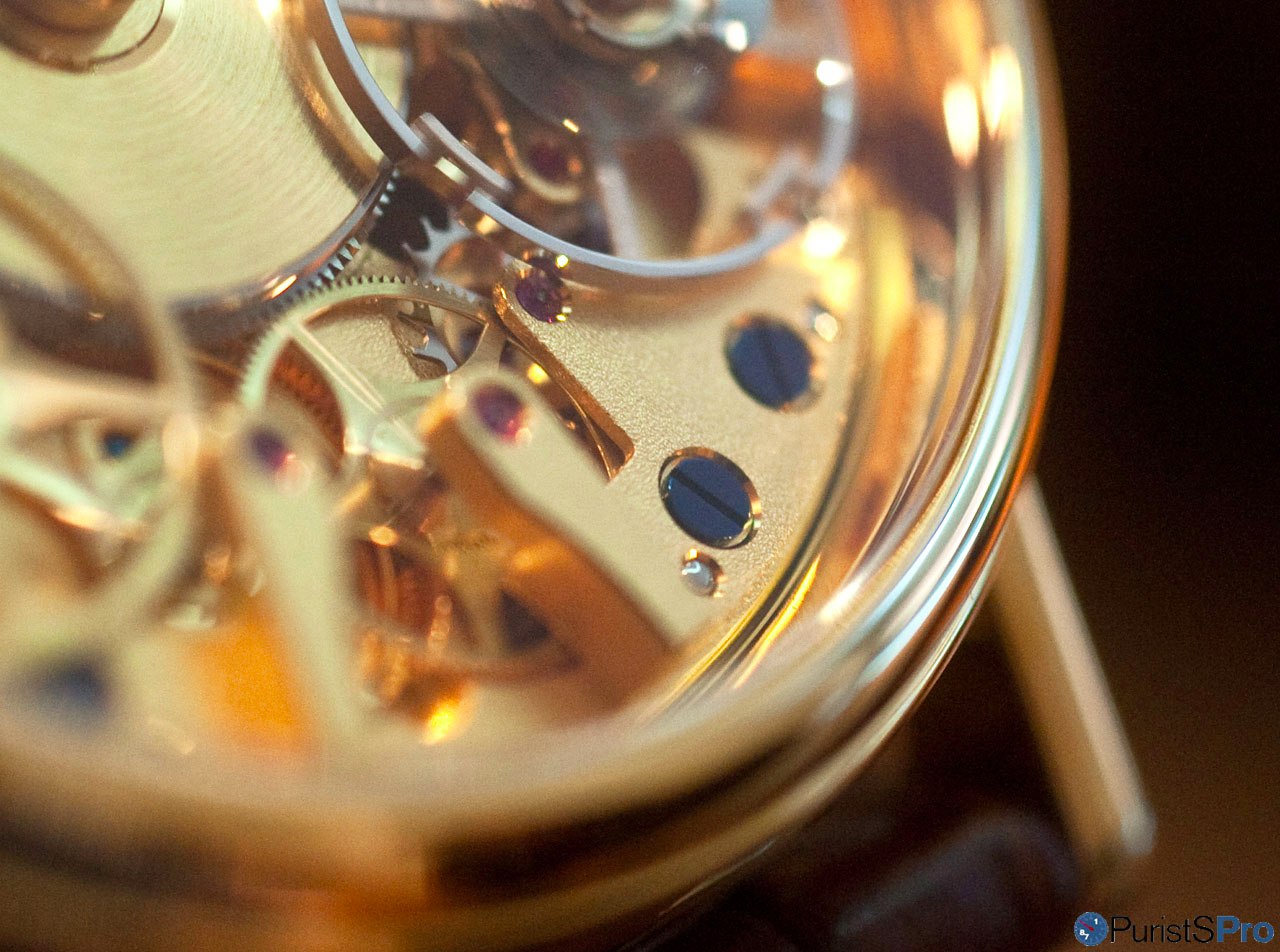
The automatic movement:
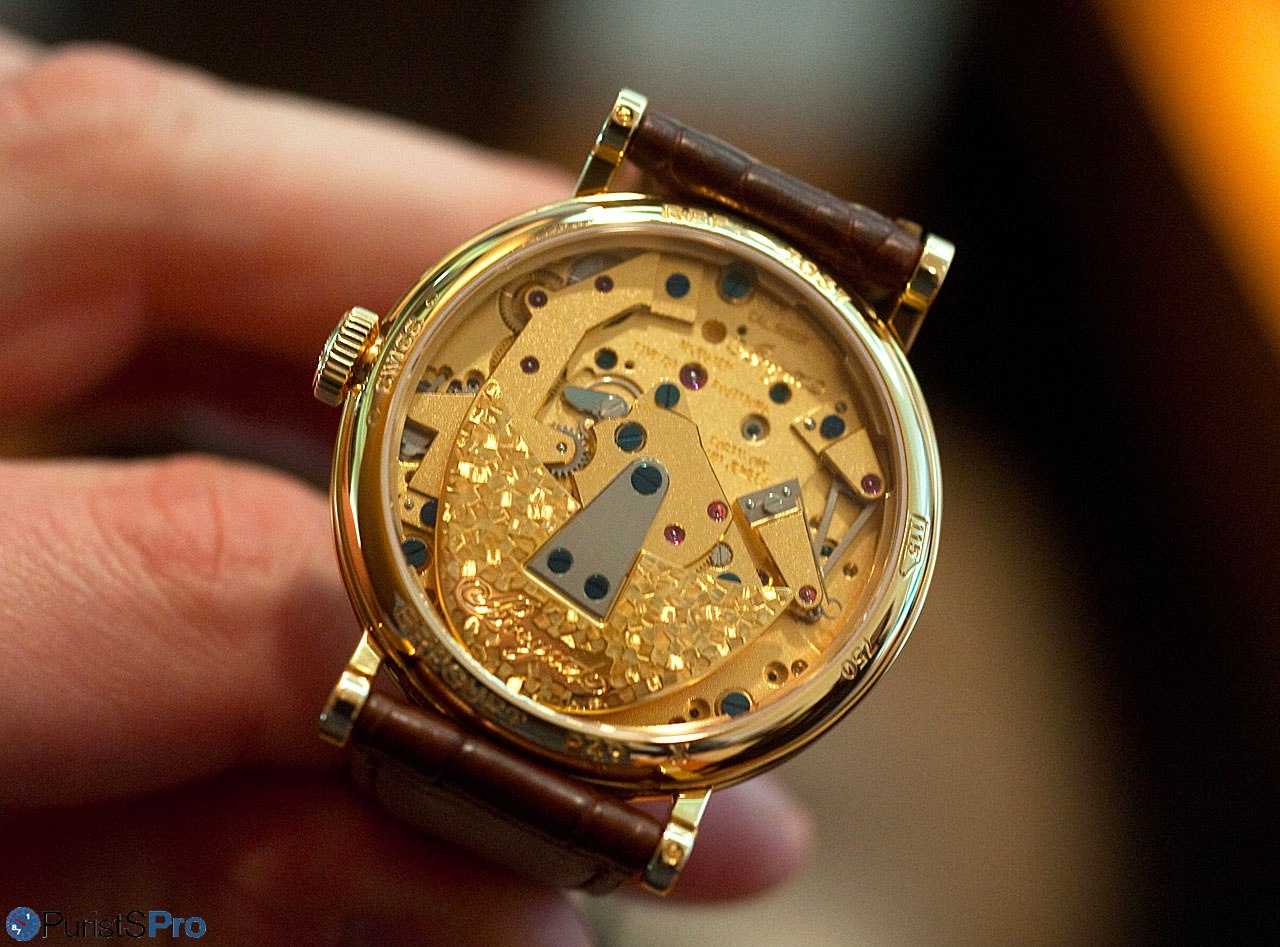
Breguet engravings and masterful embellishments everywhere:
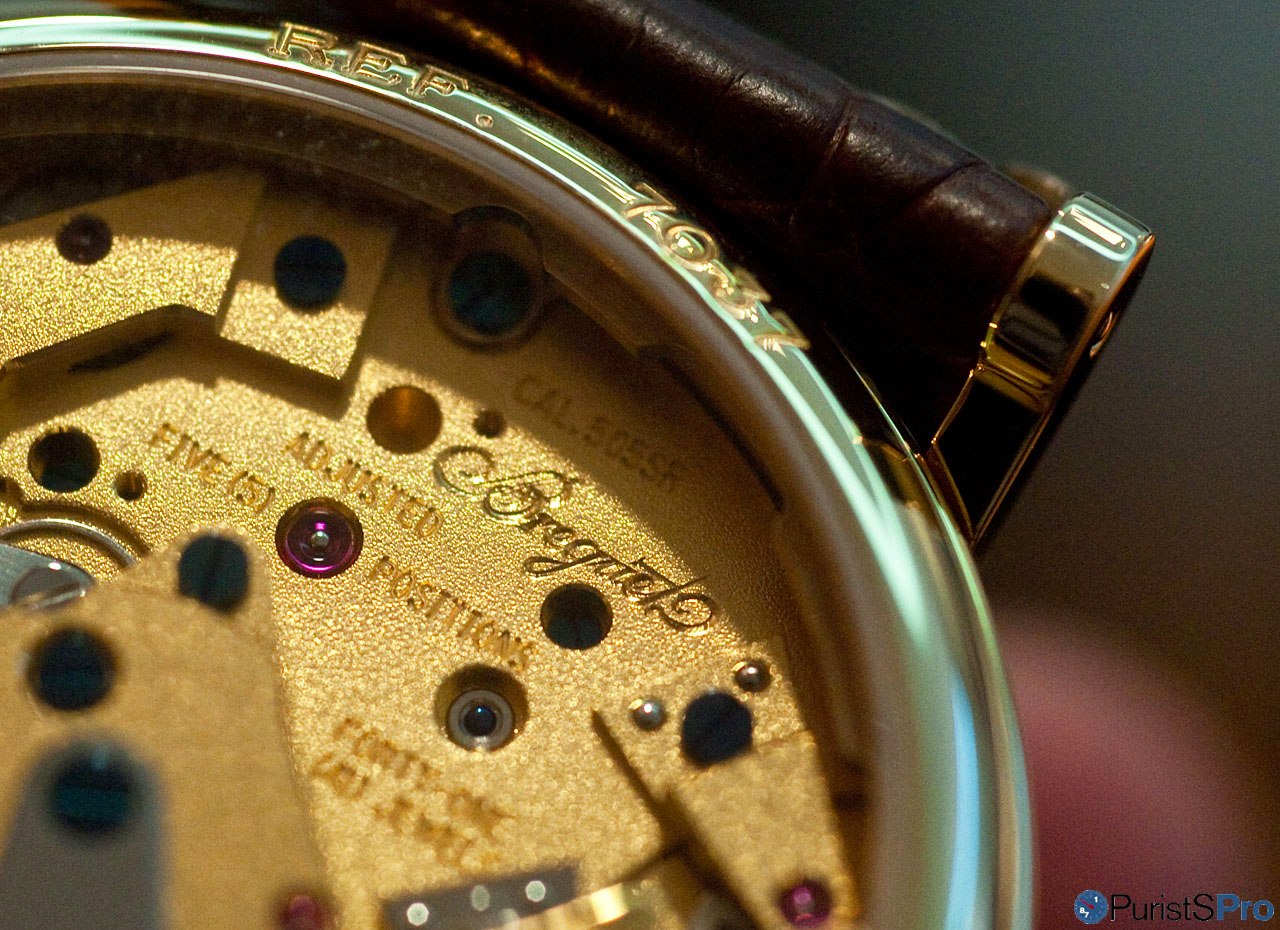
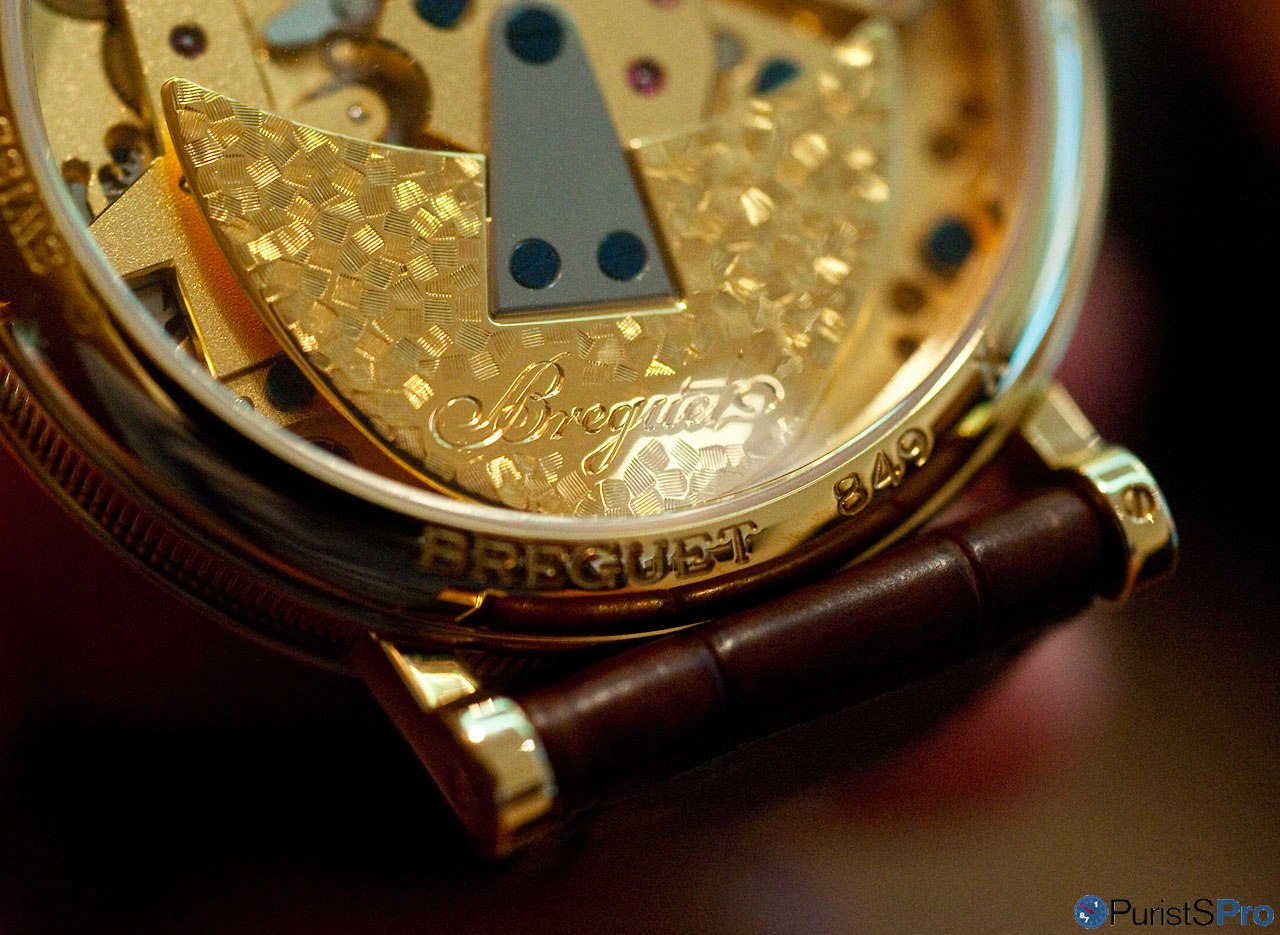
Wonderful hand-blued and concave screws securing the oscillating mass:
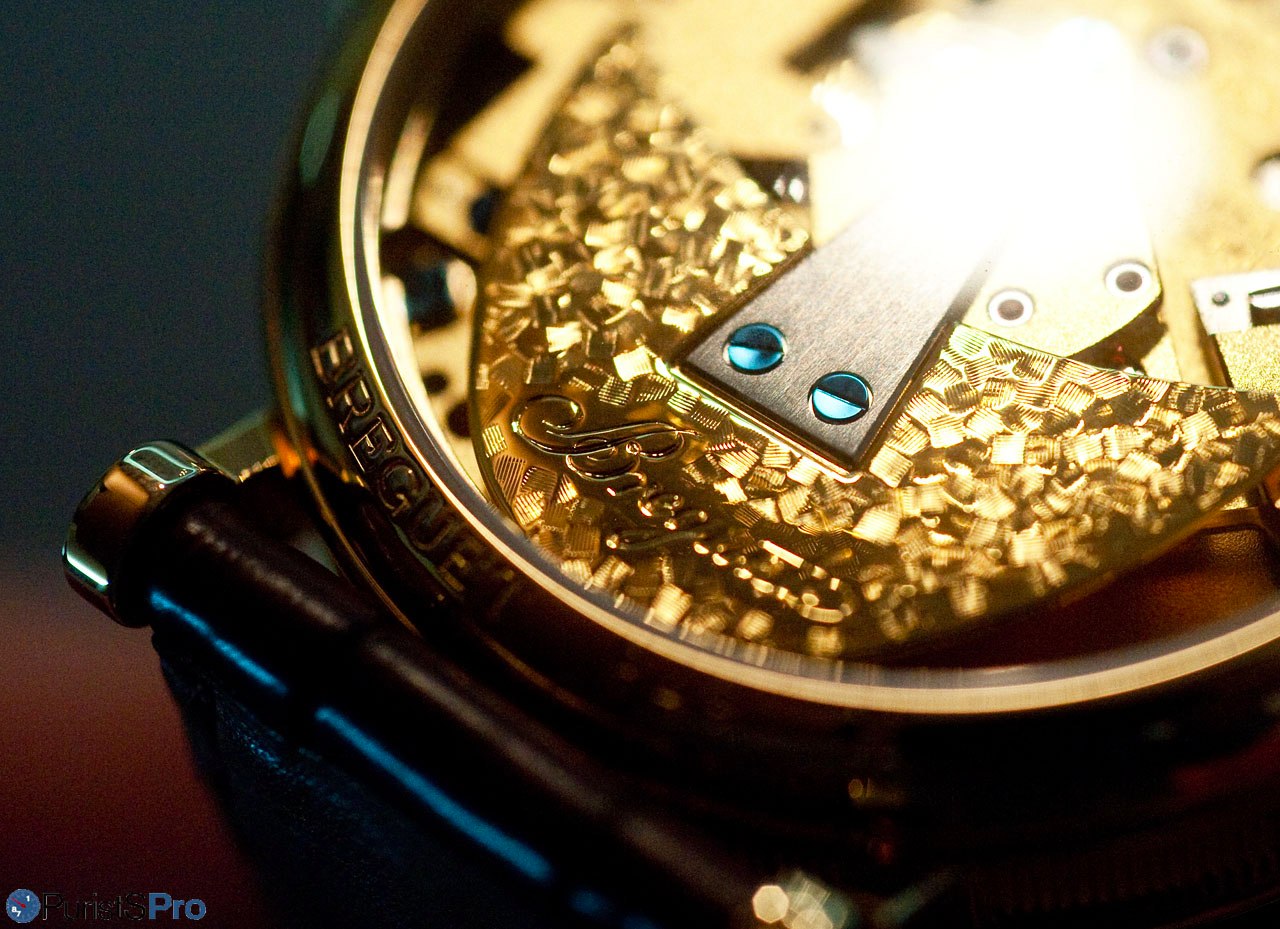
Breguet's signature rimmed case band:
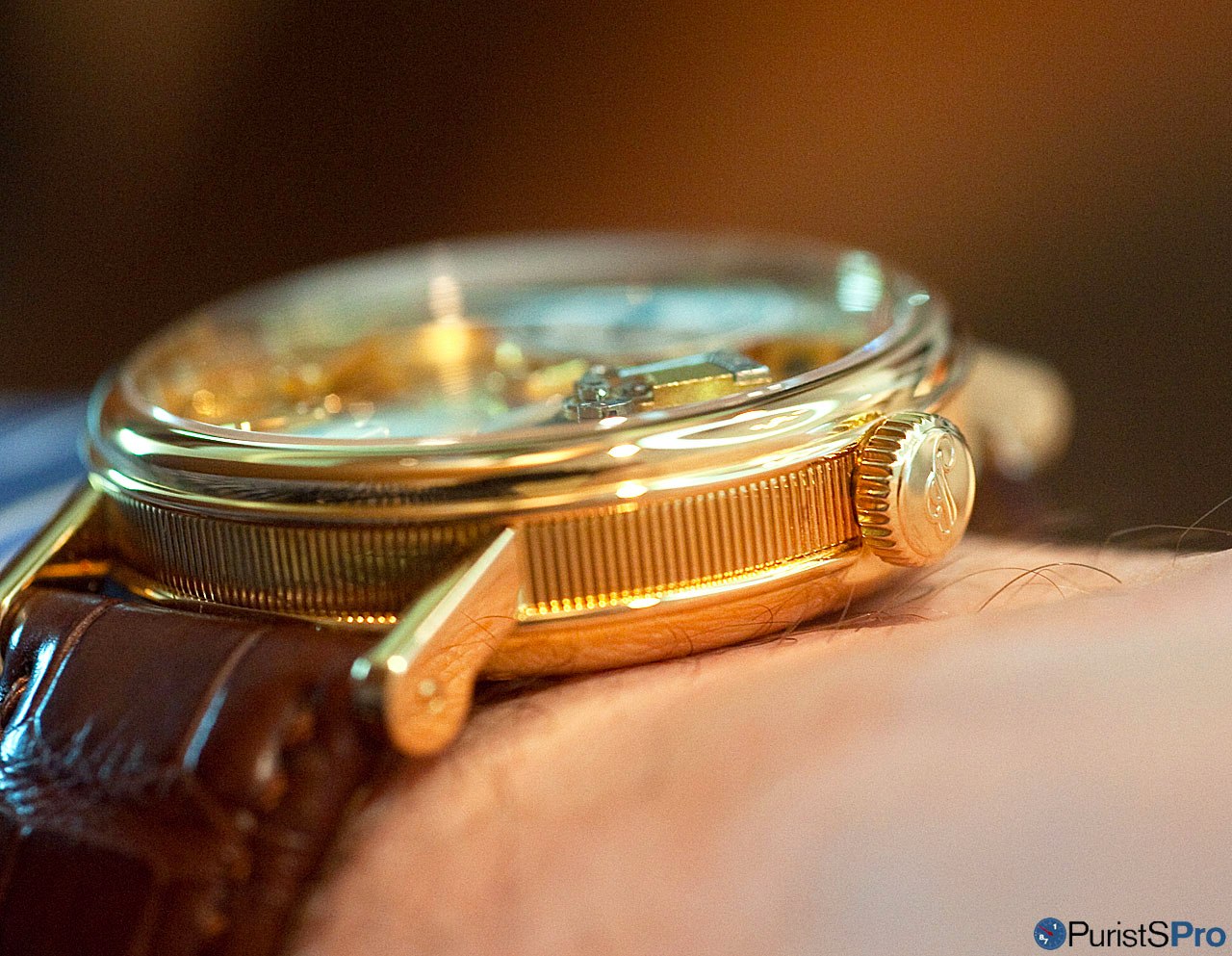
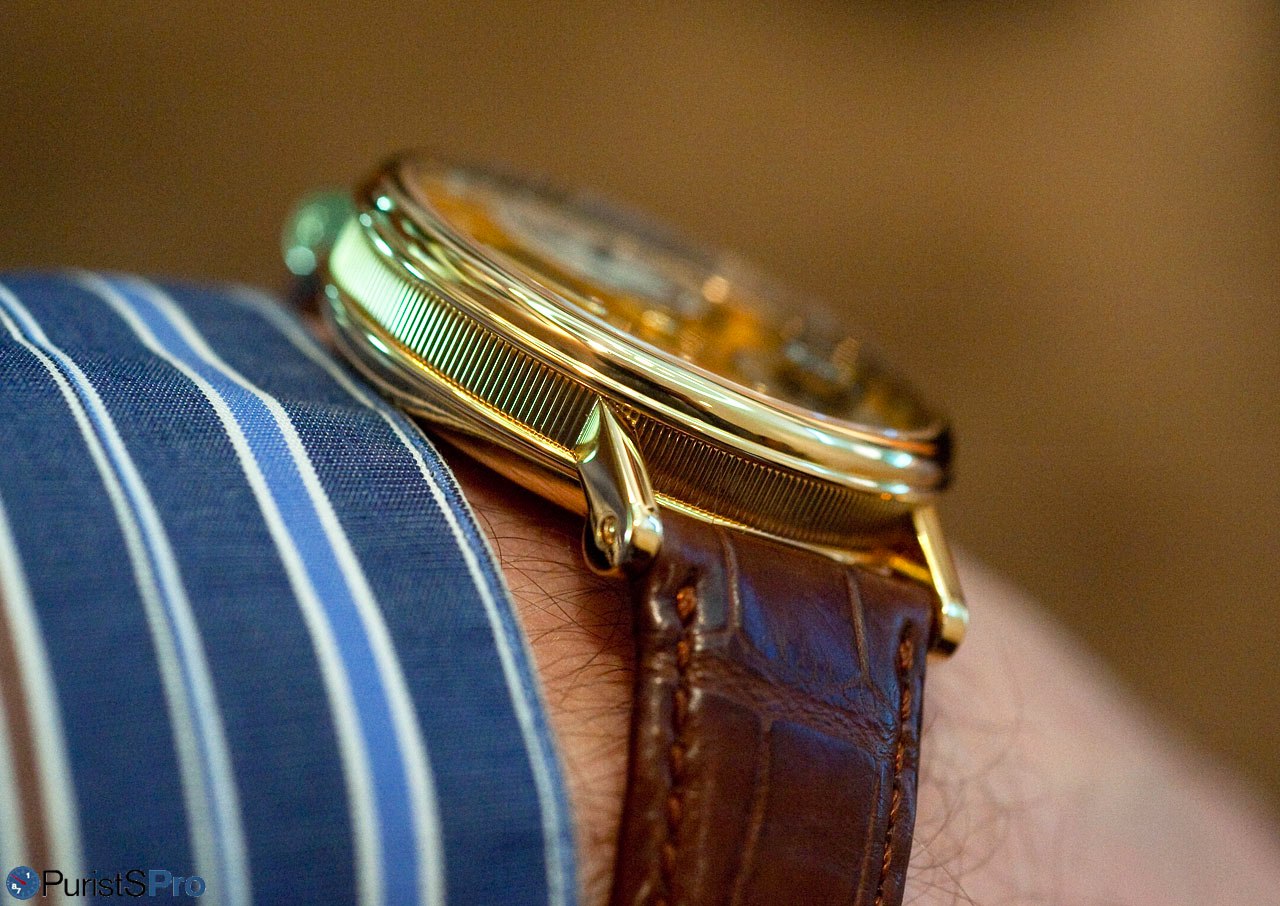
History on the wrist, for me a very moving and difficult to top sensation:
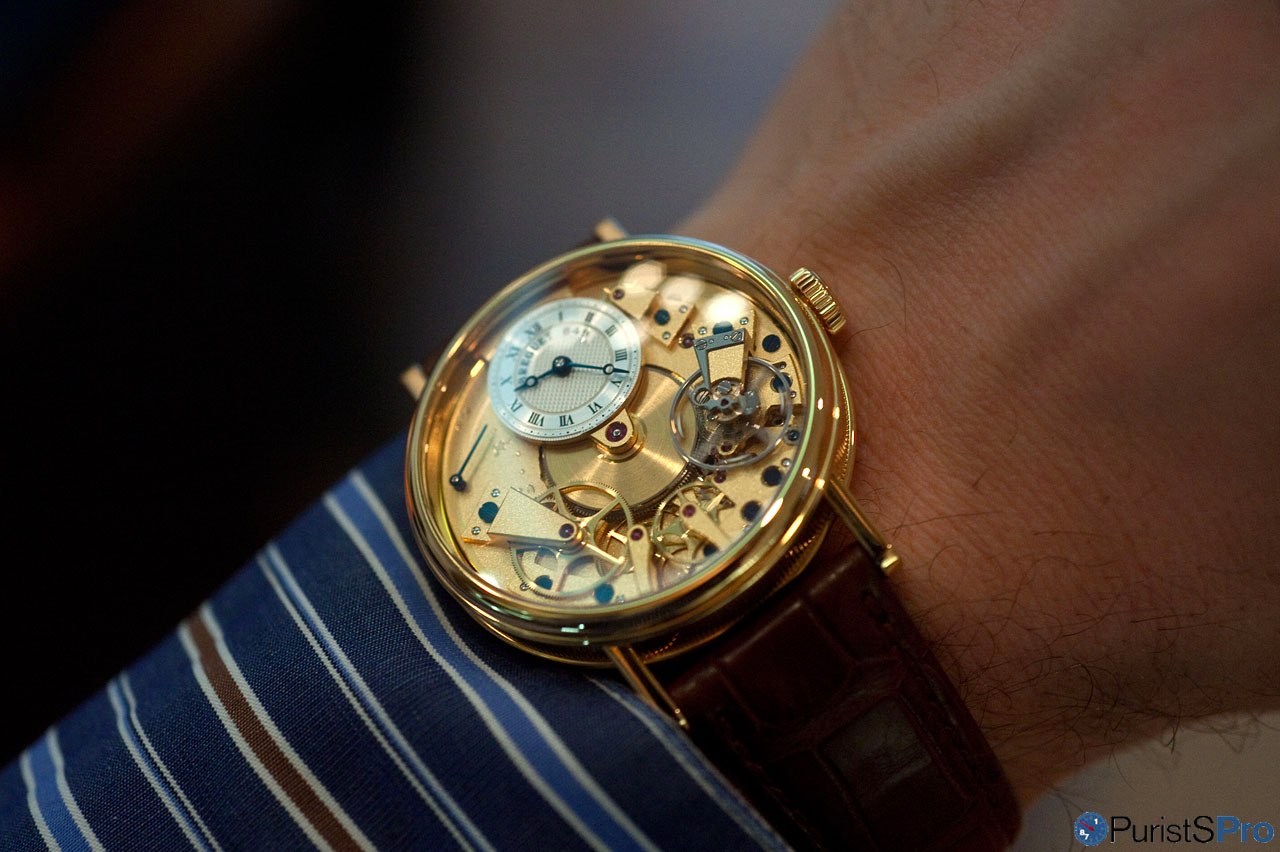
This message has been edited by Ornatus-Mundi on 2015-12-18 03:18:53









Next Article
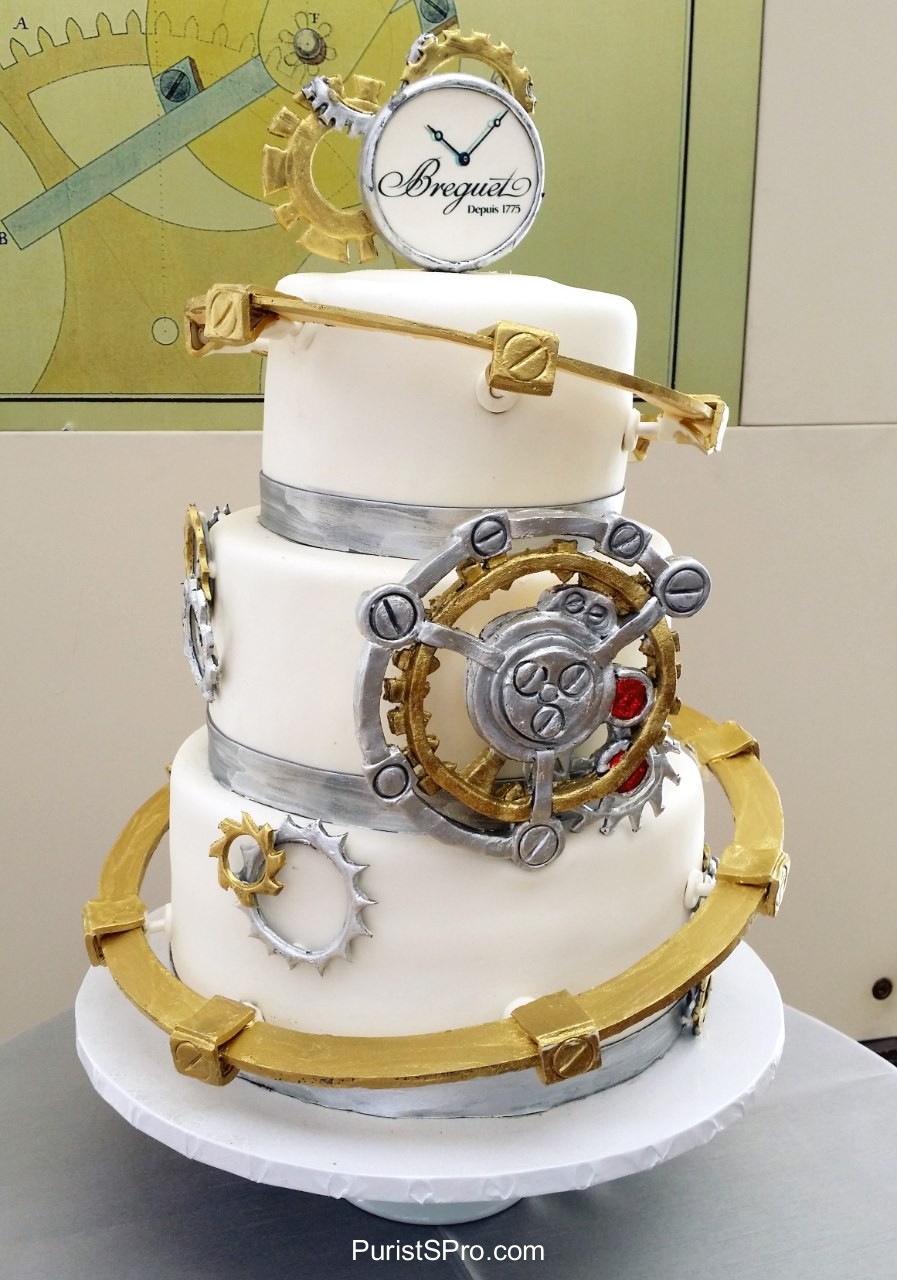

Tourbillon Day at the Breguet Beverly Hills Boutique - June 26th!

© 2017 - WatchProZine